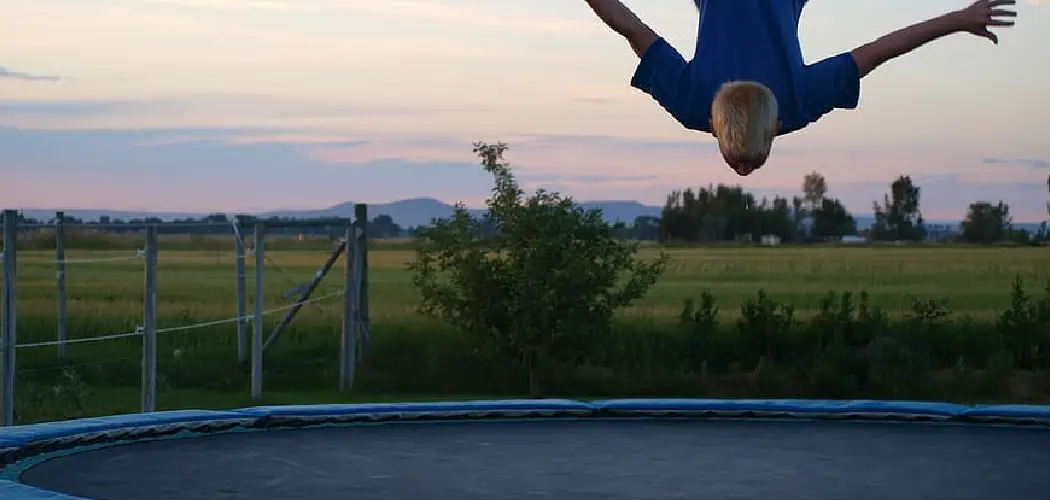Welcome to my blog on choosing the best trampoline for you and your family! As a parent and backyard trampoline enthusiast, I know the joy (and risks) an outdoor trampoline can bring. While trampolines can provide hours of fun exercise and amusement, they also require careful consideration to select the suitable model and take proper precautions.
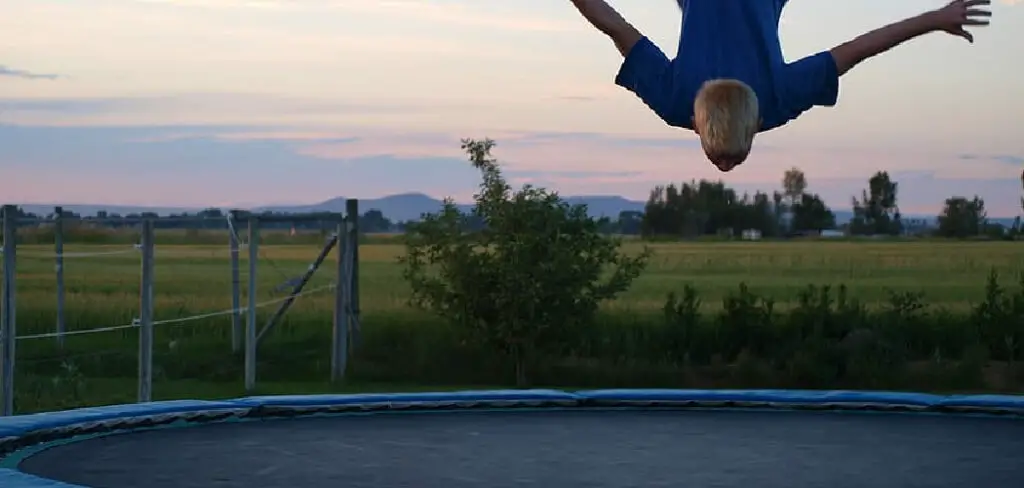
In this post, I’ll walk through the key factors to evaluate when trampoline shopping so you can bounce with confidence knowing your new backyard attraction is as safe and durable as possible.
We’ll cover trampoline features like enclosure safety nets, padded mats, weight limits, and more. By the end, you’ll be empowered to select top-rated trampolines from leading brands So grab your notepad, lace up your bouncing shoes, and let’s get started on how to choose a trampoline!
Necessary Items for Setting Up Your Trampoline
Before we dive into the nitty-gritty of trampoline selection, let’s first go over the essential items you’ll need to set up your new backyard trampoline.
- Trampoline – Of course, this is the most critical item on your list. Various types and sizes of trampolines are available, so make sure to choose one that fits your backyard space and meets your needs.
- Enclosure Safety Net – This is a must-have feature for any trampoline, mainly if children use it regularly. The safety net prevents falls off the trampoline surface, reducing the risk of injuries.
- Padded Mat – Another essential safety feature, the padded mat covers the springs and frame of the trampoline, providing cushioning for jumpers and preventing accidental injuries.
- Ladder – While optional, a ladder is helpful for young children or those with mobility issues to climb onto the trampoline easily.
- Weather Cover – This item may not seem necessary at first, but it’s essential for protecting your trampoline from harsh weather conditions such as rain, wind, and snow.
- Anchors – If you live in an area with high winds or storms, investing in trampoline anchors is a good idea to secure the trampoline to the ground and prevent it from tipping over.
- Maintenance Kit – To keep your trampoline in top condition, a maintenance kit should include items like rust remover, vinyl cleaner, and a trampoline cover.
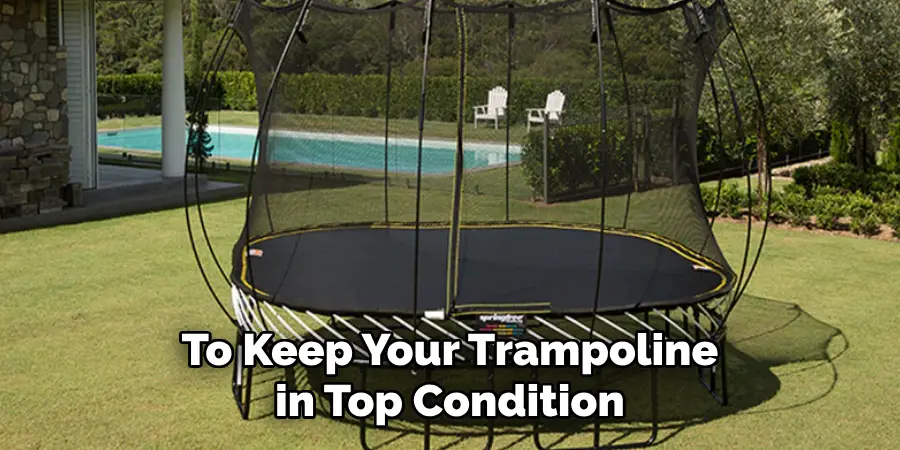
Factors to Consider When Choosing a Trampoline
Now that you know the essential items for setting up your trampoline, let’s move on to the key factors to consider when selecting the right trampoline for your family.
1) Size and Shape
Trampolines come in various sizes and shapes, including round, rectangular, square, and oval. The size and shape you choose depend on your backyard space and the age/number of people using it.
Round trampolines are the most common and suitable for multiple jumpers at once. Rectangular trampolines provide a higher bounce and are ideal for gymnasts or advanced acrobats. Square trampolines are a good compromise between round and rectangular ones, while oval trampolines offer the largest jumping surface.
2) Weight Limit
Every trampoline has a maximum weight limit that it can safely support. This limit is usually determined by the strength of the frame and springs. Check the weight limit before purchasing and consider the combined weight of all potential jumpers using it.
3) Enclosure Safety Net
As mentioned earlier, a safety net is crucial for any trampoline. Choose one with high-quality netting and sturdy poles that can withstand rough play. The enclosure should also have no gaps or holes a child could slip through.

4) Frame and Springs
The frame and springs are the backbone of any trampoline, so it’s essential to choose ones made with high-quality materials. Look for frames made of galvanized steel, which prevents rusting and increases durability. The springs should also be made from sturdy materials and have protective padding.
5) Padded Mat
The padded mat is another critical safety feature that can prevent injuries caused by landing on the springs or frame. Make sure to choose a trampoline with thick, high-quality padding covering the structure and springs completely.
With all these factors in mind, you should now have a better idea of how to choose a trampoline for you and your family. When deciding, remember to prioritize safety features like enclosure nets, padded mats, and sturdy frames/springs. And don’t forget to have fun – bouncing on a trampoline can provide endless entertainment and fitness benefits for all ages!
10 Steps on How to Choose a Trampoline
Step 1: Measure Your Backyard Space
Before you start shopping, measure the available space in your backyard to determine the maximum size of the trampoline that will fit comfortably. Consider any potential obstacles or overhead hazards, such as tree branches or power lines.
Step 2: Set a Budget
Trampolines come in various price ranges, so setting a budget before starting your search is essential. Remember to factor in the cost of necessary items like safety nets and maintenance kits.
Step 3: Choose a Shape
Decide on the shape of your trampoline based on personal preference, available space, and intended use (e.g., fitness or recreational jumping).
Step 4: Consider Weight Limits
Keep in mind the weight limits of potential jumpers when selecting a trampoline. It’s always better to choose one with a higher weight limit than necessary, just in case.
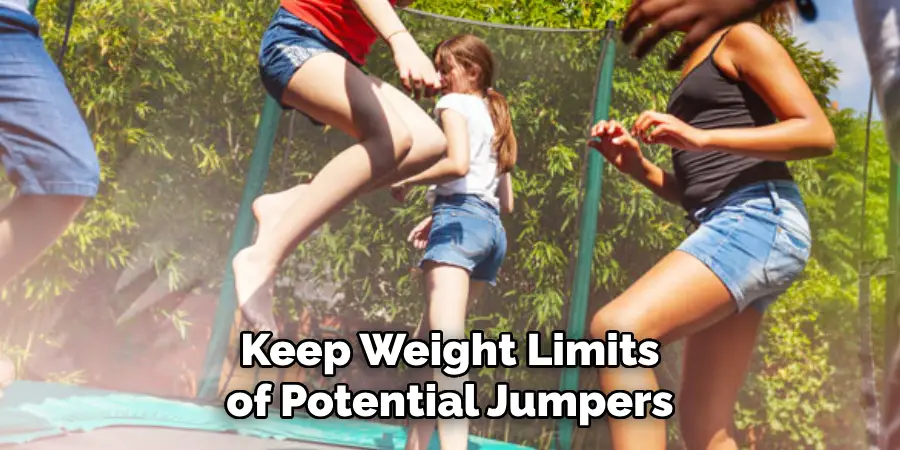
Step 5: Research Brands
Do your research on different trampoline brands and read reviews from other customers to get an idea of their products’ overall quality and safety features.
Step 6: Check for Safety Certifications
Look for trampolines with safety certifications from organizations like the American Society for Testing and Materials (ASTM) or the International Organization for Standardization (ISO).
Step 7: Visit a Store or Showroom
Visit a store or showroom to see the trampolines in person and try them out before purchasing. This will give you a better idea of each trampoline’s size, bounce, and overall feel.
Step 8: Read Warranty Information
Read the warranty information for any trampoline you are considering purchasing. A good warranty can provide peace of mind and protect your investment.
Step 9: Consider Extra Features
Some trampolines come with additional features like built-in speakers or basketball hoops. Consider these extras, but remember to prioritize safety features above all else.
Step 10: Make Your Purchase
After carefully considering all factors and options, it’s time to purchase! Remember to follow guidelines for proper assembly and maintenance to ensure the longevity and safety of your trampoline.
And most importantly, have fun! Whether you’re using your trampoline for fitness or recreational purposes, it’s sure to provide hours of enjoyment for the whole family. So get bouncing and enjoy all the benefits of owning a trampoline!
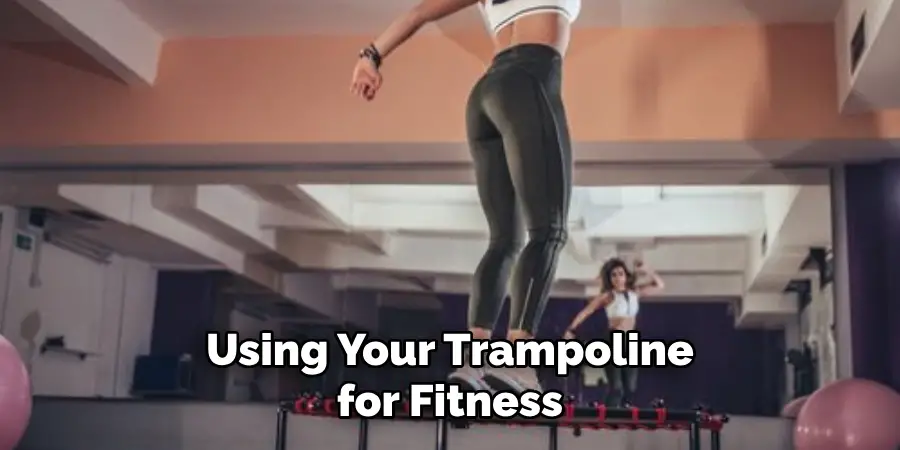
8 Things to Avoid When Using a Trampoline
While trampolines can provide endless fun and fitness benefits, it’s essential to be aware of potential dangers and take precautions to avoid accidents. Here are eight things to avoid when using a trampoline:
1) Multiple Jumpers
Trampolines are designed for one person at a time. Adding additional jumpers can increase the risk of collisions and accidents. Ensure this rule is enforced with friends and family using the trampoline.
2) Flips and Tricks
Unless you are a trained gymnast or acrobat, it’s best to avoid attempting flips and other advanced tricks on a trampoline. These moves can be dangerous and increase the risk of injury.
3) Landings near Springs or Frame
Always aim to land in the center of the trampoline mat and avoid landing near the springs or frame. This will help prevent injuries from hitting hard surfaces.
4) Using the Trampoline in Inclement Weather
Avoid using the trampoline during rain, wind, or snow. Slippery surfaces and strong winds can increase the risk of accidents and injuries.
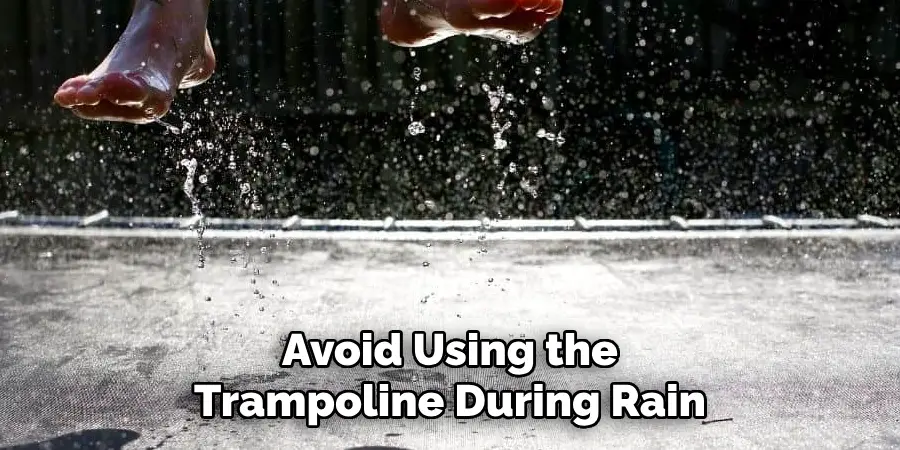
5) Jumping Off the Trampoline
Never jump off the trampoline onto the ground – this can lead to serious injury. Always use the ladder or step off carefully.
6) Allowing Young Children on a Full-Sized Trampoline
Full-sized trampolines are not recommended for children under six years old. If you have young children, consider purchasing a tinier, kid-sized trampoline for their safety.
7) Neglecting Maintenance
Regularly inspect and maintain your trampoline to ensure all parts are functioning correctly. This includes checking for tears in the mat, loose springs or poles, and general wear and tear.
8) Ignoring Weight Limits
Trampolines have weight limits for a reason – exceeding the recommended weight can lead to accidents and injuries. Always follow weight guidelines when using your trampoline.
By avoiding these potential hazards, you can enjoy your trampoline safely and reap all its benefits. Remember always to prioritize safety first and have fun! So bounce away on your new trampoline confidently, knowing you’ve taken all the necessary precautions.
Frequently Asked Questions About Trampolines
How Much Space Do I Need for a Trampoline?
The amount of space needed can vary depending on the size and shape of the trampoline. As a general rule, having at least 2 feet of clearance around the entire trampoline is recommended. However, more space may be needed for more giant trampolines or if you plan to do flips and tricks.
Can I Leave My Trampoline Outside All Year?
It’s recommended to store your trampoline indoors during the winter months to protect it from harsh weather conditions. If you must leave it outside, adequately cover and secure it to prevent damage.
Do I Need a Safety Net for My Trampoline?
While not required, safety nets can provide an extra layer of protection and prevent jumpers from falling off the trampoline. It’s always better to err on the side of caution and consider investing in a safety net.
How Often Should I Maintain My Trampoline?
Regular maintenance should be done at least once a month, with a more thorough inspection every 3-6 months. This will help ensure the safety and longevity of your trampoline.
Can I Assemble My Trampoline by Myself?
Having at least two people assemble a trampoline is always recommended for safety reasons. However, if you choose to assemble it yourself, follow all instructions and safety guidelines carefully. Having someone nearby for assistance if needed is also a good idea.
Conclusion
In conclusion, choosing the right trampoline requires careful consideration of various factors. By understanding the different sizes, shapes, and weight capacities, you can select a trampoline that fits your needs and preferences. Remember to consider the safety features, warranty, and budget before deciding.
And most importantly, always prioritize safety when using a trampoline by following proper maintenance and usage guidelines. With these tips on how to choose a trampoline in mind, you are now equipped to make an informed decision when purchasing a trampoline for yourself or your family.

